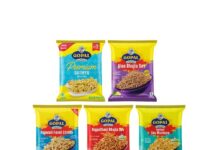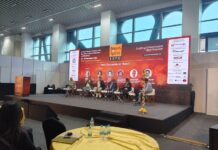This World Environment Day on 5 June, the theme was #BeatPlasticPollution. Debates were held across forums, brands flaunted their ‘sustainable alternatives’, the media went overboard with special reports with some alarming statistics about plastic pollution, educational institutions asked students to make presentations and in organized housing societies, residents took a ‘no to plastic pledge’. The hype remained for a couple of days, And it was back to normal after that. Everything seemed to have been forgotten.
A few days before World Environment Day, a crucial meeting held in Paris to discuss ways and means to negotiate a legally binding treaty to end plastic pollution ended without a concrete outcome. The UN’s intergovernmental Negotiating Committee’s (INC-2) meeting was supposed to develop a zero draft for the international legally binding instrument to end plastic pollution throughout the life cycle of plastic. The INC is a body of 193 UN member countries.
The Paris discussions were based on an options paper released by the INC secretariat before the INC-2 meeting. INC-2 follows up on INC-1, held in Punta del Este, Uruguay, in 2022. The paper was based on written submissions sent by member states on their suggestions for an ideal global plastic treaty. “Only 67 member states put in their submissions…the lows of the meeting were clearly deeper than the highs,” Atin Biswas, a waste management expert at the think-tank Centre for Science at Environment, who was present at the meeting, says. The meeting ended without any zero draft. The focus has now shifted to INC-3 in Nairobi, Kenya in November 2023. All in all a passing-the-buck game.
In plastic, there are broadly three stages – upstream, which includes the production and consumption of virgin plastic polymers; midstream, which is product design and use; and downstream, which is plastic waste management and treatment.
There are some proponents – the High Ambition Coalition (HAC) of 50 countries for example – of upstream intervention measures such as a cut or restrictions in the production and consumption of primary plastic polymers to sustainable levels, but very few takers among the oil-producing nations. The majority seem to be in favor of midstream and downstream – which include recycling, redesign, reuse, and management. Plus viable environment-friendly alternatives.
Environment expert Juliet Kabera, director general of the Environment Authority of Rwanda, a small African Country, in a recent discussion, stressed that one can’t be talking about waste management and recycling and not stop the production of polymers. Rwanda, for those who may not know, has enforced one of the toughest bans on plastic bags.
There are reports that India, apart from advocating a consensus-based approach, has rejected a cut in polymer production and focused on the management of plastic as well as re-design and reuse – which some environmentalists feel is a regressive step. The management of any kind of waste in India by itself is a task in itself considering the failed ban on the use of select single-use plastics imposed last July, which experts say was an eyewash as the more problematic multi-layered packaging was spared. The banned items such as plastic cutlery and poly bags are easily available simply because production hasn’t stopped and implementation has been tardy.
Recycling and management can be one way to tackle the issue but globally less than 10% of waste is recycled and 22% is mismanaged. In India, the numbers would be way higher. Segregation of plastic and packaging waste is also a challenge in India. Even if the waste is separated at home, the municipal pickers dump everything into one truck, which ends up in the ever-growing landfills – throwing the recycling option into the bin. Organized recycling firms that are coordinating with housing societies offer a glimmer of hope.
The industry on its part seems to be looking at more sustainable and compostable ways of packaging – launching newer environment-friendly packaging. Industry associations such as the Confederation of Indian Industry, WWF-India, and WRAP launched the India Plastics Pact in 2021 to “unify stakeholders from across the plastics value chain to rethink the way we design, use and reuse plastics to create a circular economy for plastics packaging.” Member companies are taking small but important steps toward sustainability. If ITC, for example, is selling its handwash in reusable rigid bottles with refill pouches, Mondelez has eliminated the use of wrapping films around chocolate boxes. Or Godrej & Boyce has moved to a corrugated box honeycomb structure in place of thermocol packaging.
All said and done, all the talk and action on the ground is too little to show any visible impact. In a previous editorial, we had hoped for a positive outcome from the Paris meeting. Now the focus has shifted to Nairobi. As common citizens, we can just hope that this one won’t end up as another meeting in a chain of endless discussions – but at the same time, we do our tiny yet significant bit to save the environment by following the ‘reduce, reuse, recycle’ formula. As every drop counts.
IndiFoodBev — authentic, impactful and influential
An English-language food and beverage processing and packaging industry B2B platform in print and web, IndiFoodBev is in its third year of publication. It is said that the Indian food and beverage industries represent approximately US$ 900 billion in revenues which implies more than 20% of the country’s GDP. Eliminating the wastage on the farmside can help to deliver more protein to a higher number of the population apart from generating sizable exports. The savings in soil, seeds, water, fertilizer, energy and ultimately food and nutrition could be the most immense contribution that country is poised to make to the moderation of climate change.
To improve your marketing and grow sales to the food and beverage processing and packaging industry, talk to us. Our research and consulting company IppStar [www.ippstar.org] can assess your potential and addressable markets in light of the competition. We can discuss marketing, communication, and sales strategies for market entry and growth.
Suppliers and service providers with a strategy and budget for targeted marketing can discuss using our hybrid print, web, video, and social media channels to create brand recognition linked to market relevance. Our technical writers are ready to meet you and your customers for content.
The second largest producer of fruit and vegetables in the world is continuously expanding processing capacities and delivery systems with appropriate innovative technologies. We cover product and consumer trends, nutrition, processing, research, equipment and packaging from farm to thali. Get our 2025 media kit and recalibrate your role in this dynamic market. Enhance your visibility and relevance to existing markets and turn potential customers into conversations. Ask for a sample copy of our bi-monthly in print or our weekly IndiFoodBev eZine each Wednesday.
For editorial info@ippgroup.in — for advertisement ads1@ippgroup.in and for subscriptions subscription@ippgroup.in
Naresh Khanna – 10 February 2025
Subscribe Now











